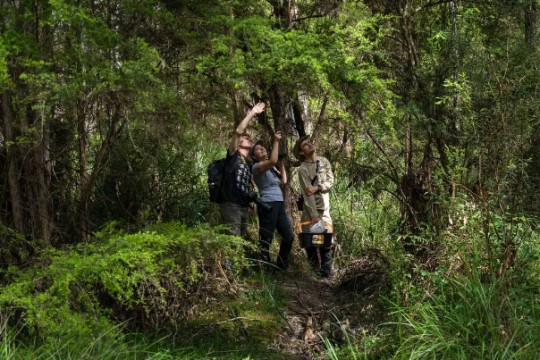RIT Joins Wireless Grid Innovation Testbed Initiative
Effort seeks to develop a notification system for low-income neighborhoods
RIT has formally joined the Wireless Grid Innovation Testbed
RIT has formally joined the Wireless Grid Innovation Testbed, a National Science Foundation Partnerships for an Innovation project that is being spearheaded by Syracuse University and Virginia Tech.
The project assists in refining transformative technologies to create markets, bridge the gap between wireless network middleware and grid application layers, and accelerate the commercialization and adoption of new products and services.
The National Science Foundation has funded the initiative’s effort to create a neighborhood notification system in a low-income Syracuse neighborhood. This system would utilize a wireless grid to allow users to notify others in the neighborhood if a suspicious activity was taking place.
Sumita Mishra, an assistant professor in RIT’s Department of Networking, Security and Systems Administration, is managing the system’s security. She will ensure that the information that passes through the various system nodes is authenticated and comes from a legitimate source. But mostly, Mishra is excited about aligning her research interests with a project that can do good in the community.
“Once this technology is developed for the pilot area it can then be implemented in other areas—not just in this country but in the developing world, as well,” Mishra says. “It’s because this system doesn’t depend on infrastructure. It doesn’t require cables to be laid down or towers to be built. It is intended for the places that need this technology most, but wouldn’t otherwise possess the resources for it to exist.”
Mishra and others involved in the project are in the midst of applying to the National Science Foundation for funding to develop a prototype and to equip the notification system with a health care component. Mishra would like to see the next round utilize sensor technology to monitor vital health information. In the event that a medical emergency occurs, a notification could be sent directly to an individual’s doctor or emergency responders.
Lee McKnight, the director of Syracuse University’s Wireless Grid Lab and the principal investigator of the initiative, is excited to welcome RIT to the effort.
“We are delighted that RIT’s expertise in information security and sensor networks, ably represented by Sumita Mishra, is being shared with our partner universities, companies, school systems and communities,” McKnight says. “The Neighborhood Notification System that RIT has already been working on with Syracuse University, Virginia Tech and City College of New York colleagues is a very exciting concept with tremendous potential to empower emergency crowdsourcing for neighbors to help neighbors in many different types of emergencies.”















